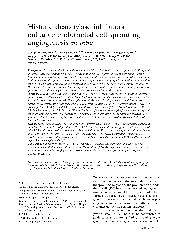摘要
Background. Treatment with histone deacetylases inhibitors (HDACi) such as valproic acid (VPA) and suberoylanilide hydroxamic acid (SAHA) has been shown to improve survival after lethal insults through mechanisms that are incompletely understood. Cell survival under adverse conditions requires a. healthy network of capillaries to ensure adequate oxygen delivery. Angiogenic activation of endothelial cells to migrate and form sprouts is associated with characteristic changes in gene expression profiles. Because HDACi can modulate expression of various genes involved in angiogenic activity, we investigated the effect of these agents on capillary-like sprout formation in this study.
Methods. Human umbilical vein endothelial cells (HUVECs) were cultured as multicellular spheroids within a type I collagen matrix, which promotes formation of sprouts resembling angiogenesis in vitro. HUVECs were cultured as multicellular spheroids within a type I collagen matrix, which promotes formation of sprouts (in vitro angiogenesis). Cells were cultured under the following conditions: Control (no growth factors); VPA (1 mmol/L); vascular endothelial growth factor (VEGF; 10 ng/mL); VPA + VEGF; SAHA (5 mmol/L), and SAHA + VEGF. After 24 hours of treatment, the length of spheroid sprouting and cell migration was assessed quantitatively. The levels of acetylated histone H3, phosphor-extracellular signal-regulated kinase (ERK)1/2, and beta-catenin in HUVECs were measured by Western blotting at 6 hours after treatment.
Results. High levels of acetylated histone H3 were detected in VPA and SAHA treated-groups. Compared with the VEGF-alone treated group (2379 +/- 147.1 mu m), the spheroid sprouting was 1.7 times increased with VPA and VEGF combined treatment (3996 +/- 192.5 mu m; P < .01). Cell migrations did not show a significant difference after addition of VPA, whereas SAHA suppressed migration. Expression of beta-catenin was significantly increased by VPA and SAHA treatments. Addition of VPA greatly enhanced expression of phosphor-ERK1/2.
Conclusion. Exposure of HUVECs to VPA and SAHA increased the expression of beta-catenin and enhanced spheroid sprout formation in vitro. Modulation of HDAC-dependent pathways may offer a novel approach to alter angiogenic processes and provide a useful therapeutic target. (Surgery 2011;150:429-35.)
- 出版日期2011-9
